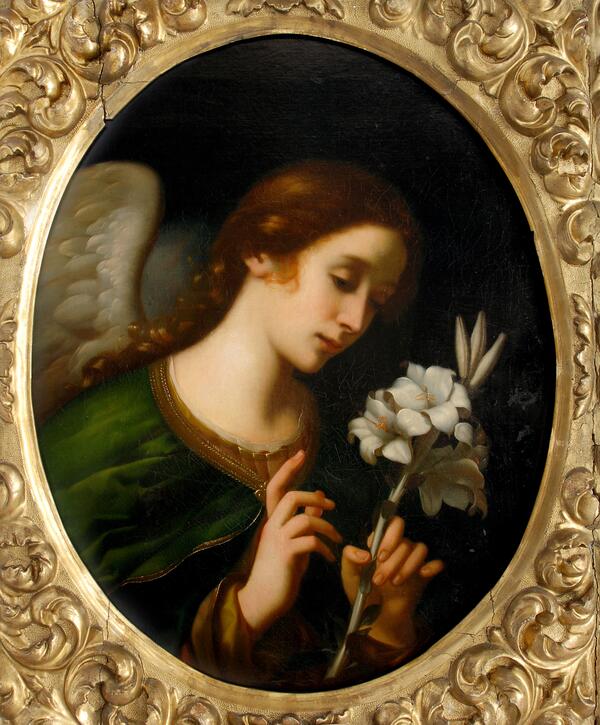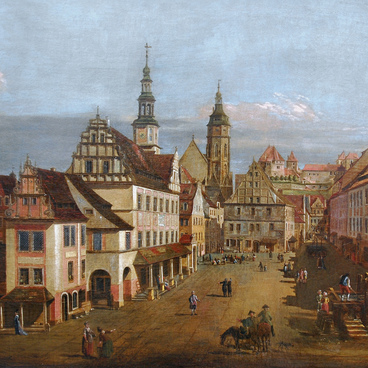“Archangel Gabriel” in the collection of the Primorye State Art Gallery is a mystery, one of those works with an unclear origin. The canvas was purchased in 1939 in Vladivostok from a private person as a copy of a painting by the Florentine artist Carlo Dolci, made by an unknown master of the 18th century. Currently, the gallery staff suggests that the work dates back to an earlier time — the 17th century. The original canvas remains unknown.
Most of Carlo Dolci’s paintings were based on religious themes. His works were very popular among collectors, but in the 19th century they began to be criticized for excessive idealization and “sweetness”. It is known that in the last decades of his life, after the 1650s, Dolci developed the traditions of the early Renaissance classics Filippo Lippi and Pietro Perugino, although the Baroque style was predominant at the time. It seems that the painting from the collection of the Primorye Art Gallery belongs to that period of Dolci’s work and is actually closer to the Renaissance than to the Baroque.
Icon painters most often depicted the archangel Gabriel at full length as a golden-haired angel with wings folded behind his back. The painting “Archangel Gabriel” from the collection of the Primorye Art Gallery is a chamber portrait. In his left hand, Gabriel holds his ever-present attribute originally found on the icons of the Annunciation — a green branch, which is often depicted with lily flowers — a symbol of purity.
According to Christian tradition, it was the archangel Gabriel who appeared to the Virgin Mary with the good news that she should bear a son — Jesus Christ. From ancient Greek, the word “archangel” can be translated literally as “the principal angel” or “the head messenger”. Gabriel is mentioned many times in the scriptures. In the Old Testament, Gabriel announces the future coming of the Messiah. In the Gospel of Luke, Gabriel announces the birth of John the Baptist, a man who was supposed to prepare the people for the coming of Christ, the Savior of the world. Luke describes Gabriel’s reference to himself in this way:
Most of Carlo Dolci’s paintings were based on religious themes. His works were very popular among collectors, but in the 19th century they began to be criticized for excessive idealization and “sweetness”. It is known that in the last decades of his life, after the 1650s, Dolci developed the traditions of the early Renaissance classics Filippo Lippi and Pietro Perugino, although the Baroque style was predominant at the time. It seems that the painting from the collection of the Primorye Art Gallery belongs to that period of Dolci’s work and is actually closer to the Renaissance than to the Baroque.
Icon painters most often depicted the archangel Gabriel at full length as a golden-haired angel with wings folded behind his back. The painting “Archangel Gabriel” from the collection of the Primorye Art Gallery is a chamber portrait. In his left hand, Gabriel holds his ever-present attribute originally found on the icons of the Annunciation — a green branch, which is often depicted with lily flowers — a symbol of purity.
According to Christian tradition, it was the archangel Gabriel who appeared to the Virgin Mary with the good news that she should bear a son — Jesus Christ. From ancient Greek, the word “archangel” can be translated literally as “the principal angel” or “the head messenger”. Gabriel is mentioned many times in the scriptures. In the Old Testament, Gabriel announces the future coming of the Messiah. In the Gospel of Luke, Gabriel announces the birth of John the Baptist, a man who was supposed to prepare the people for the coming of Christ, the Savior of the world. Luke describes Gabriel’s reference to himself in this way:



